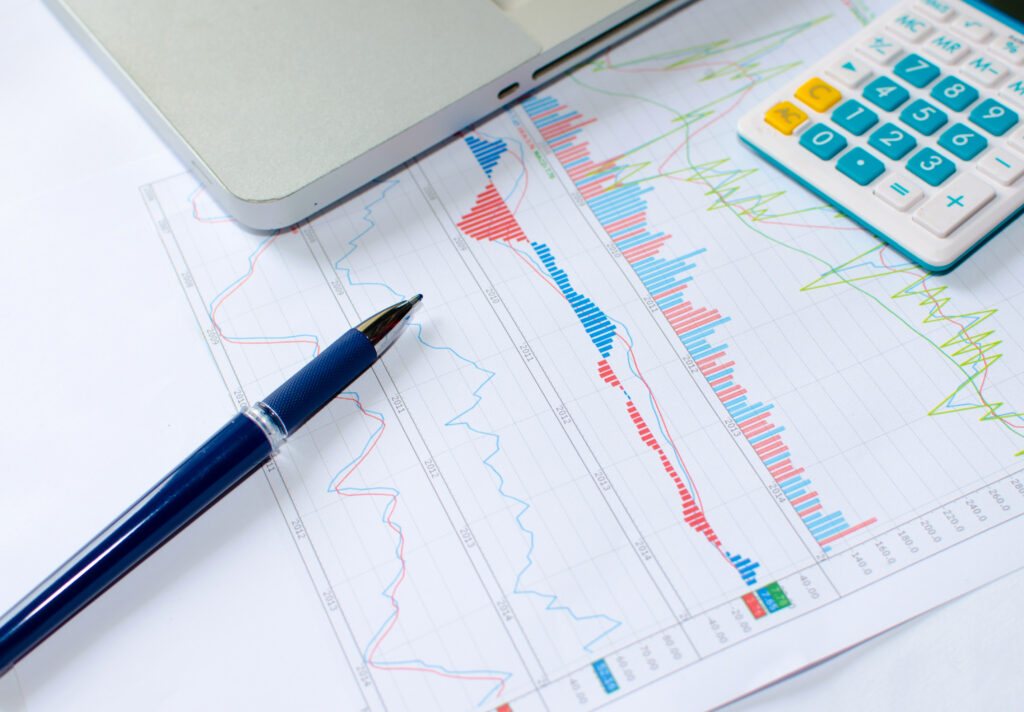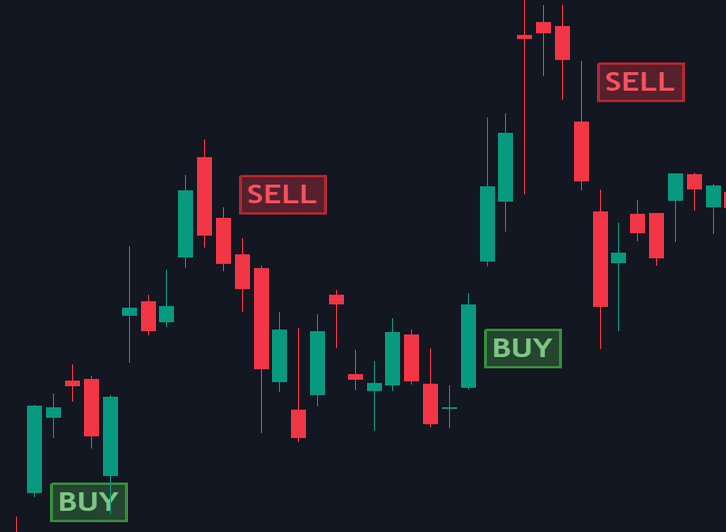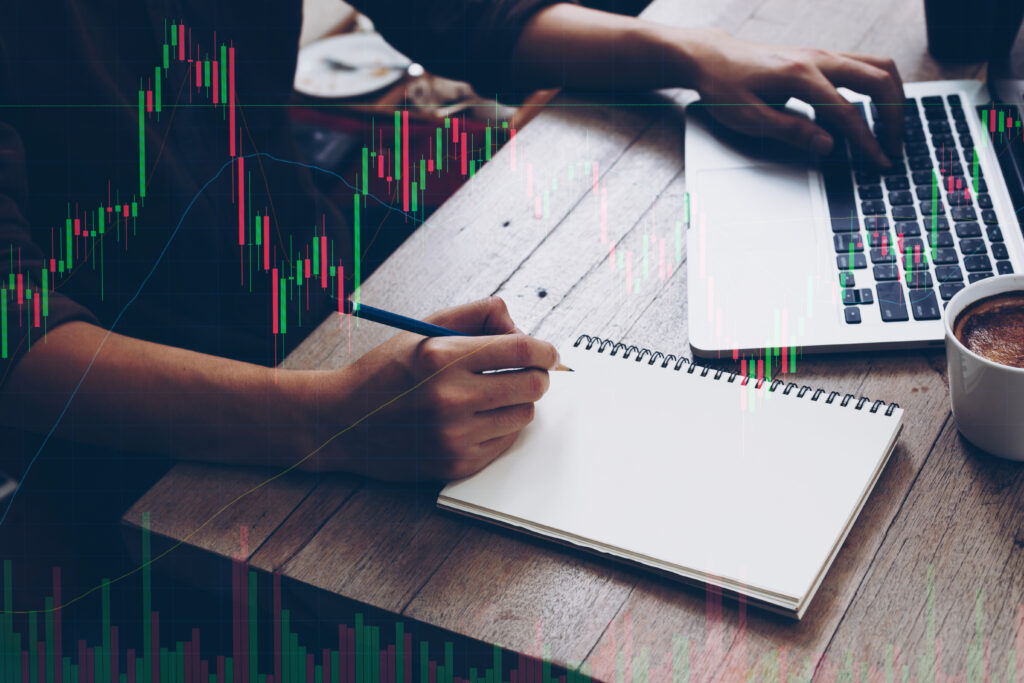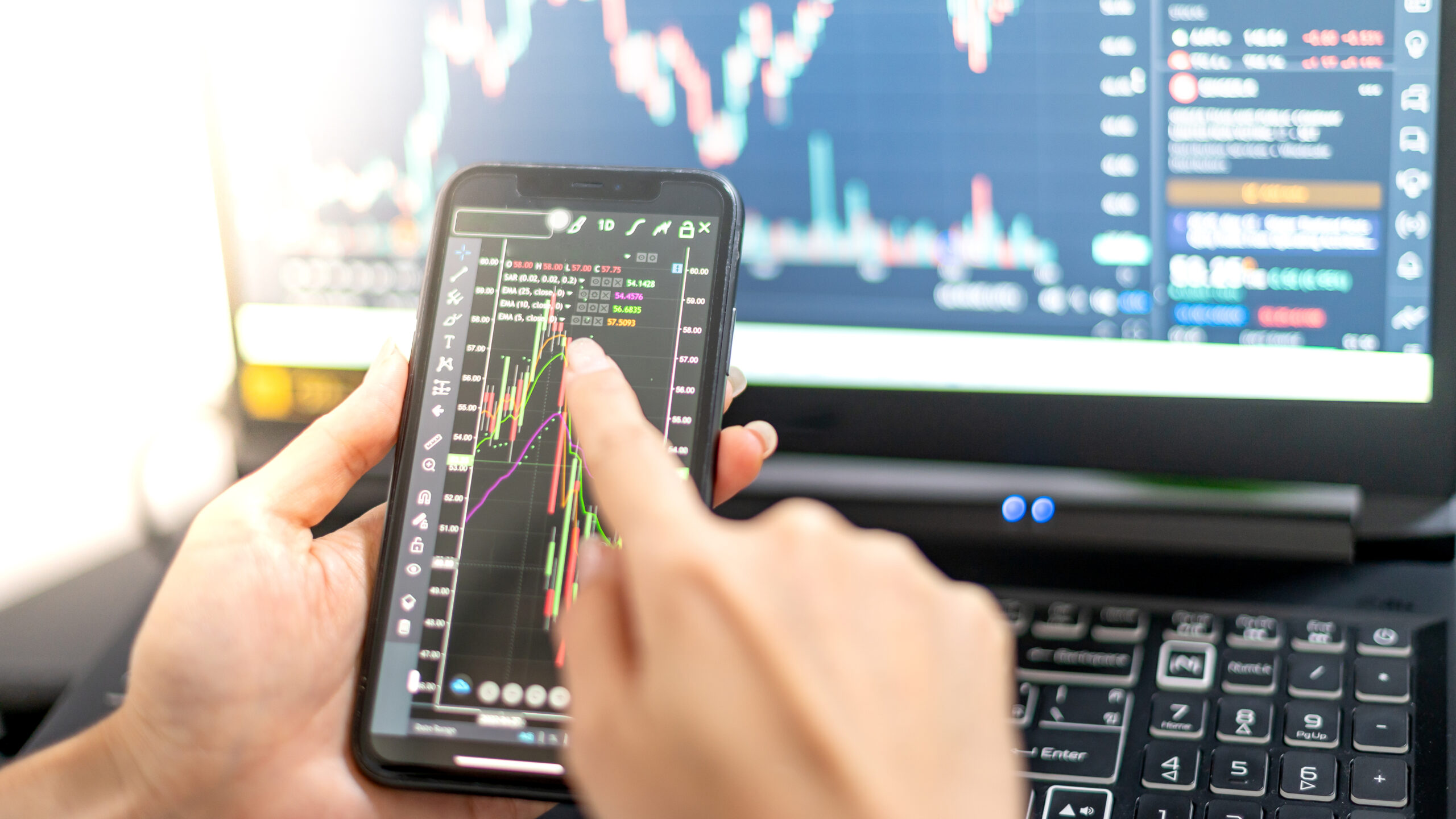Trading, the buying and selling of financial instruments such as stocks, bonds, currencies, and commodities, has long captured the imagination of investors and speculators alike. It’s a realm where fortunes are made and lost, where astute analysis meets gut instinct, and where discipline and strategy are paramount. Trading is not merely about buying low and selling high; it’s a complex interplay of psychology, economics, and technology.
Financial trading encompasses a diverse array of markets where investors and traders buy and sell various assets, aiming to profit from price movements and capitalize on market opportunities. From traditional stocks and bonds to modern cryptocurrencies and derivatives, each market offers unique characteristics, risks, and trading strategies. In this article, we delve into the multifaceted world of trading, exploring its intricacies, challenges, and strategies for success.
How to Start Trading?
Starting trading can be an exciting yet daunting endeavor, especially for those who are new to the financial markets. Here’s a step-by-step guide to help you begin your trading journey:
- Educate Yourself: Before diving into trading, it’s essential to gain a solid understanding of financial markets, trading instruments, and basic trading concepts. There are numerous articles available on this website that can help you build a foundation of knowledge.
- Define Your Trading Goals and Risk Tolerance: Determine your reasons for trading, whether it’s to generate supplemental income, grow your wealth, or simply learn about financial markets. Additionally, assess your risk tolerance – how much capital you’re willing to risk on each trade and your ability to withstand potential losses.
- Choose Your Trading Style: There are various trading styles to consider, including day trading, swing trading, position trading, and investing. Each style has its own characteristics, time horizon, and risk profile, so choose one that aligns with your goals, personality, and available time commitment.
- Select a Brokerage Platform: Research and choose a reputable brokerage platform that offers the trading instruments and features you need. Consider factors such as trading fees, customer support, and the availability of research and educational resources. Ensure that the brokerage platform is regulated by relevant authorities to protect your funds and personal information.
- Open a Trading Account: Once you’ve selected a brokerage platform, follow the account opening process, which typically involves providing personal information, verifying your identity, and funding your account. Most brokerages offer various types of accounts, including cash accounts and margin accounts, so choose one that suits your trading preferences and risk tolerance.
- Develop a Trading Plan: A trading plan serves as your roadmap, outlining your trading goals, strategies, risk management rules, and criteria for entering and exiting trades. Define your trading strategy, including the types of assets you’ll trade, your entry and exit criteria, and the size of your positions. Additionally, establish rules for managing risk, such as setting stop-loss orders and adhering to position sizing principles.
- Start Trading with a Demo Account: Before risking real money, consider practicing your trading strategies with a demo account provided by your brokerage platform. A demo account allows you to simulate trading in real market conditions without risking capital, helping you gain experience and confidence before transitioning to live trading.
- Monitor and Evaluate Your Performance: Once you start trading live, continuously monitor your trades, track your performance, and evaluate the effectiveness of your trading strategies. Keep a trading journal to record your trades, including the reasons for entering and exiting each trade, and analyze your results to identify strengths and areas for improvement.
- Continue Learning and Adapting: Trading is a dynamic and ever-evolving field, so commit to continuous learning and improvement. Stay updated on market developments, explore new trading strategies and techniques, and learn from both successful and unsuccessful trades. Adapt your trading plan as needed based on your experience and changing market conditions.
- Exercise Patience and Discipline: Trading requires patience, discipline, and emotional control. Avoid succumbing to impulsive decisions driven by fear or greed and stick to your trading plan and risk management rules consistently. Remember that success in trading is a marathon, not a sprint, so stay focused on your long-term goals and remain resilient in the face of setbacks.

Free Backtesting Spreadsheet
Stock Trading
Stock trading involves buying and selling shares of publicly traded companies, allowing investors to participate in corporate ownership and share in the company’s profits and losses. The stock market serves as a barometer of economic health and corporate performance, influenced by factors such as earnings reports, economic indicators, and geopolitical events. Stock traders analyze company fundamentals, technical indicators, and market trends to identify trading opportunities and make informed decisions. Strategies range from long-term investing based on value or growth principles to short-term trading focused on exploiting price movements and market inefficiencies.
Leverage is commonly used in forex trading to amplify potential returns.
Forex Trading
The forex market, short for foreign exchange, is the largest and most liquid financial market globally, where currencies are traded against each other. Forex trading involves speculating on the relative value of currency pairs, such as EUR/USD or GBP/JPY, and profiting from exchange rate fluctuations. Major participants in the forex market include central banks, commercial banks, multinational corporations, and individual traders. Forex traders utilize technical analysis, fundamental analysis, and sentiment analysis to forecast currency movements and execute trades. Leverage is commonly used in forex trading to amplify potential returns, but it also increases the risk of losses, making risk management crucial for successful trading.
Commodity Trading
Commodity trading involves buying and selling raw materials such as gold, oil, wheat, and coffee, which serve as essential inputs in various industries. Commodity prices are influenced by supply and demand dynamics, geopolitical factors, weather conditions, and macroeconomic trends. Commodity traders aim to profit from price fluctuations by taking positions in futures contracts, options, or physical commodities. Strategies range from trend following and mean reversion to spread trading and arbitrage. Commodity trading offers diversification benefits and a hedge against inflation, but it also carries risks related to price volatility, geopolitical events, and regulatory changes.
Derivative Trading
Derivatives are financial instruments whose value is derived from an underlying asset, such as stocks, bonds, commodities, or currencies. Common types of derivatives include options, futures, forwards, and swaps, which are used for hedging, speculation, and risk management. Derivative trading allows investors to gain exposure to asset classes and market segments while managing risk and enhancing portfolio performance. Derivative traders employ various strategies, including option spreads, futures spread trading, delta hedging, and volatility trading. However, derivative trading involves complex instruments and requires a thorough understanding of market dynamics, pricing models, and risk management techniques.
Futures Trading
Futures contracts are standardized agreements to buy or sell an underlying asset at a predetermined price on a specified future date. Futures trading allows investors to speculate on the price movements of commodities, financial indices, currencies, and other assets. Unlike options, futures contracts obligate both parties to fulfill the terms of the contract upon expiration, regardless of the current market price. Futures traders aim to profit from price fluctuations by taking long (buy) or short (sell) positions in futures contracts. Strategies in futures trading include trend following, spread trading, arbitrage, and scalping. Futures trading offers leverage, liquidity, and price transparency but carries risks related to leverage, margin calls, and market volatility.
Options trading offers flexibility, limited risk (for long positions), and potential for high returns.
Options Trading
Options are financial instruments that grant the buyer the right, but not the obligation, to buy (call option) or sell (put option) an underlying asset at a predetermined price (strike price) within a specified period (expiration date). Options trading allows investors to profit from price movements, volatility changes, and time decay. Option buyers pay a premium to acquire the option contract, while option sellers receive the premium in exchange for assuming the obligation. Options traders employ various strategies, including buying calls or puts, writing covered calls, selling cash-secured puts, and constructing complex option spreads such as straddles, strangles, and butterflies. Options trading offers flexibility, limited risk (for long positions), and potential for high returns but requires careful risk management and understanding of option pricing models, such as the Black-Scholes model.
Crypto Trading
Crypto trading involves buying and selling digital currencies such as Bitcoin, Ethereum, and Ripple on cryptocurrency exchanges. Cryptocurrencies operate on decentralized blockchain networks, offering benefits such as security, transparency, and borderless transactions. Crypto traders speculate on the price movements of cryptocurrencies against fiat currencies or other digital assets, aiming to profit from market inefficiencies and volatility. Crypto trading strategies include trend following, swing trading, arbitrage, and algorithmic trading. However, crypto trading is highly speculative and volatile, with risks related to regulatory uncertainty, cybersecurity threats, and market manipulation.
Bond Trading
Bond trading involves buying and selling debt securities issued by governments, municipalities, and corporations. Bonds provide fixed income streams through periodic interest payments and the return of principal at maturity. Bond prices fluctuate based on interest rates, inflation expectations, credit quality, and market conditions. Bond traders analyze yield curves, credit spreads, and economic indicators to assess bond valuations and identify trading opportunities. Strategies range from yield curve trading and credit spread trading to duration hedging and relative value trading. Bond trading offers diversification benefits, capital preservation, and income generation, but it also carries risks related to interest rate changes, credit defaults, and liquidity constraints.

Image by Vecteezy
Market Analysis Techniques
Market analysis is a crucial aspect of trading, involving the evaluation of various factors to make informed decisions about buying and selling financial instruments. Traders employ different methods of market analysis, each offering unique insights into market conditions and trends. The three primary techniques used in market analysis are technical analysis, fundamental analysis, and sentiment analysis.
Technical Analysis
Technical analysis involves the study of past market data, primarily price and volume, to forecast future price movements. Traders analyze charts, patterns, and technical indicators to identify trends, support and resistance levels, and potential entry and exit points. Common technical analysis tools include moving averages, trendlines, oscillators, and candlestick patterns. Technical analysis is based on the premise that historical price action tends to repeat itself and that market trends can be identified and exploited for trading opportunities.
Fundamental Analysis
Fundamental analysis focuses on evaluating the intrinsic value of financial instruments by analyzing economic, financial, and qualitative factors. Traders assess fundamental factors such as company earnings, revenue growth, balance sheet strength, industry trends, and macroeconomic indicators to determine the underlying value of assets. Fundamental analysis helps traders identify undervalued or overvalued assets and make long-term investment decisions based on the underlying fundamentals of the market.
Sentiment Analysis
Sentiment analysis involves gauging market sentiment and investor psychology to assess the prevailing mood and sentiment in the market. Traders monitor news, social media, and market sentiment indicators to gauge investor sentiment and market expectations. Sentiment analysis can provide insights into market sentiment extremes, sentiment shifts, and potential contrarian trading opportunities. However, sentiment analysis is subjective and can be influenced by noise and market manipulation.
Traders often combine multiple analysis techniques to gain a comprehensive understanding of market dynamics and make more informed trading decisions. By integrating technical, fundamental, and sentiment analysis, traders can identify high-probability trading opportunities, manage risk effectively, and improve trading performance.

Trading Styles and Strategies
Successful trading requires a blend of analytical skills, risk management techniques, and psychological resilience. Here are some popular trading styles and strategies employed by market participants.
Day Trading
Day trading is a fast-paced style of trading where traders buy and sell financial instruments within the same trading day, aiming to capitalize on short-term price fluctuations. Day traders rely on technical analysis, chart patterns, and momentum indicators to identify trading opportunities. By closely monitoring intraday price movements and executing quick trades, day traders seek to profit from small price movements, often leveraging margin and employing high-frequency trading techniques to enhance returns.
Swing Trading
Swing trading style involves holding positions for several days to weeks, profiting from medium-term price movements. Swing traders seek to capture ‘swings’ or oscillations in asset prices, exploiting short-term fluctuations within the context of longer-term trends. They use a combination of technical and fundamental analysis to time their trades, identifying entry and exit points based on chart patterns, support and resistance levels, and market sentiment. Unlike day traders, swing traders are less concerned with intraday volatility and focus on capturing larger price moves over a longer time horizon.
Trend Following
Trend following is a strategy employed by traders who aim to profit from the sustained directional movements of financial assets. Trend followers identify trends using trendlines, moving averages, and trend-following indicators, entering long positions in uptrends and short positions in downtrends. They ride the trend until signs of reversal or exhaustion emerge, using trailing stop-loss orders to protect profits and mitigate losses. Trend following strategies require patience and discipline, as traders may experience periods of drawdowns during market consolidations or reversals.
Value Investing
Value investing is a long-term strategy adopted by investors seeking to buy undervalued assets trading below their intrinsic worth. Value investors analyze financial statements, cash flows, and business fundamentals to identify bargain opportunities in the market. They focus on companies with strong competitive advantages, sustainable growth prospects, and attractive valuation metrics, such as low price-to-earnings (P/E) ratios or high dividend yields. Value investing emphasizes buying quality assets at a discount to their intrinsic value and holding them for the long term, allowing time for the market to recognize their true worth.
Arbitrage
Arbitrage is a strategy employed by traders to exploit price discrepancies between related assets or markets, aiming to earn risk-free profits. Arbitrageurs identify mispriced assets or inefficiencies in pricing mechanisms and take advantage of the price differentials by simultaneously buying and selling assets in different markets. Common types of arbitrage include spatial arbitrage, where traders exploit price differences between different geographical locations, and temporal arbitrage, where traders capitalize on price divergences over time. Arbitrage strategies require sophisticated technology, low latency execution, and efficient risk management to ensure profitability while minimizing market exposure.
Discretionary trading is an approach of trading where decisions are made based on the trader’s judgment, intuition, and subjective interpretation of market information.
Two Different Approaches of Trading
Trading, as a profession, encompasses a wide array of approaches and philosophies, each with its own set of principles, strategies, and methodologies. Among these approaches, two prominent philosophies stand out: discretionary trading and systematic trading. While both aim to achieve profitability in the financial markets, they differ significantly in their execution, decision-making processes, and reliance on automation. Let’s explore each in detail.
Discretionary Trading
Discretionary trading is an approach of trading where decisions are made based on the trader’s judgment, intuition, and subjective interpretation of market information. In discretionary trading, traders rely on their experience, expertise, and market knowledge to analyze market conditions, identify trading opportunities, and execute trades. This approach emphasizes human discretion and qualitative analysis, allowing traders to adapt to changing market dynamics and exercise flexibility in their decision-making process.
Key Characteristics of Discretionary Trading:
Subjectivity: Discretionary traders interpret market data and price action subjectively, relying on their intuition and judgment to make trading decisions. This subjective analysis often incorporates qualitative factors such as market sentiment, news events, and geopolitical developments.
Flexibility: Discretionary traders have the flexibility to adjust their trading strategies and tactics in real-time, based on their assessment of market conditions and evolving trends. This adaptability allows them to capitalize on emerging opportunities and navigate market uncertainties effectively.
Emotion-driven: Discretionary trading is inherently influenced by human emotions such as greed, fear, and confidence. Traders may experience psychological biases and behavioral patterns that impact their decision-making process, leading to impulsive actions or irrational trades.
Experience-dependent: Discretionary trading relies heavily on the trader’s experience, expertise, and intuition. Successful discretionary traders often have years of market experience and a deep understanding of market dynamics, enabling them to identify patterns, anticipate market movements, and execute trades with precision.
In systematic trading, traders develop and implement automated trading systems that generate buy and sell signals based on predetermined criteria, without human intervention.
Systematic Trading
Systematic trading, also known as algorithmic trading or quantitative trading, is a rules-based approach to trading where decisions are based on predefined quantitative algorithms and mathematical models. In systematic trading, traders develop and implement automated trading systems that generate buy and sell signals based on predetermined criteria, without human intervention. This approach emphasizes objectivity, precision, and consistency in trading execution.
Key Characteristics of Systematic Trading:
Objectivity: Systematic traders rely on quantitative analysis and statistical models to generate trading signals, removing subjective bias and emotion from the decision-making process. Trading decisions are based on predefined rules and criteria, ensuring consistency and objectivity in trading execution.
Automation: Systematic trading systems are automated and computerized, allowing for rapid execution of trades and real-time monitoring of market conditions. These systems utilize algorithmic strategies, technical indicators, and data analysis techniques to identify profitable trading opportunities and execute trades with precision.
Backtesting and Optimization: Systematic traders rigorously backtest and optimize their trading algorithms using historical data to evaluate performance, refine strategies, and optimize parameters. This iterative process helps identify robust trading strategies and improves the probability of success in live trading.
Scalability: Systematic trading systems are highly scalable, allowing traders to execute trades across multiple markets, timeframes, and instruments simultaneously. This scalability enables systematic traders to capitalize on a wide range of opportunities and diversify their trading portfolios effectively.
The choice between these two approaches depends heavily on individual preferences, and skillsets. Those who thrive on analysis, enjoy the challenge of building models, and prioritize objectivity may find systematic trading to be a suitable fit. Their analytical skills can be valuable asset in developing and executing automated trading strategies. On the other hand, individuals who are adept at identifying patterns, comfortable making quick decisions, and possess strong intuition may gravitate towards discretionary trading. Their experience, ability to adapt to changing market conditions, and capacity to manage emotions will be crucial for success in this approach.
Stop loss orders act as insurance against adverse price movements, preventing emotional decision-making and minimizing downside risk.
Risk Management and Psychology
Trading is inherently risky, with the potential for significant financial losses. Effective risk management is thus indispensable for preserving capital and achieving long-term success. Key risk management principles include:
Position Sizing: Determining the appropriate size of each trade relative to the trader’s account size and risk tolerance. Position sizing helps limit potential losses and ensures that no single trade unduly impacts overall portfolio performance.
Stop Loss Orders: Setting predefined exit points to limit losses in case a trade moves against expectations. Stop loss orders act as insurance against adverse price movements, preventing emotional decision-making and minimizing downside risk.
Diversification: Spreading capital across different asset classes, sectors, and trading strategies to reduce portfolio volatility and correlation risk. Diversification enhances risk-adjusted returns and cushions against losses in any single position or market segment.
Emotional Discipline: Emotions such as greed, fear, and overconfidence can cloud judgment and lead to irrational decision-making. Successful traders cultivate emotional discipline, maintaining composure in the face of market volatility and adhering to predefined trading rules.
Continuous Learning: The financial markets are dynamic and ever-evolving, requiring traders to stay abreast of new developments, strategies, and technologies. Continuous learning through books, courses, and real-world experience is essential for adapting to changing market conditions and refining trading skills.
Trading Platforms and Tools
Trading platforms and tools facilitate trading activities and provide traders with access to financial markets. These platforms offer a wide range of features, functionalities, and customization options to meet the diverse needs of traders.
Charting Software: Charting software allows traders to visualize market data, analyze price movements, and identify trading patterns and trends. Charting tools typically include various chart types (e.g., line charts, bar charts, candlestick charts), technical indicators, drawing tools, and customization options. Traders use charting software to conduct technical analysis, identify entry and exit points, and monitor market trends in real-time.
Trading Terminals: Trading terminals are comprehensive platforms that provide traders with access to multiple financial markets, trading instruments, and order execution capabilities. Trading terminals offer features such as advanced charting, real-time market data, order management tools, and risk management functionalities. These platforms cater to professional traders and institutional investors who require sophisticated trading tools and advanced order types.
Algorithmic Trading Platforms: Algorithmic trading platforms enable traders to automate trading strategies and execute trades based on predefined rules and algorithms. These platforms offer algorithm development tools, backtesting capabilities, and connectivity to brokerage APIs for seamless integration with trading accounts. Algorithmic trading platforms allow traders to execute trades with speed, precision, and consistency, reducing emotional bias and human error in trading decisions.
Trading platforms and tools vary in complexity, cost, and functionality, so traders should choose platforms that align with their trading style, experience level, and specific requirements. Whether trading stocks, forex, commodities, or cryptocurrencies, selecting the right trading platform is essential for achieving trading success and maximizing profitability.

Thodsapol Thongdeekhieo/Vecteezy
Trading Performance Analysis
Evaluating trading performance is essential for identifying strengths and weaknesses, refining trading strategies, and improving overall profitability. Traders use various methods and metrics to assess trading performance and measure the effectiveness of their trading strategies.
Risk-Adjusted Returns: Risk-adjusted returns measure the return on investment relative to the level of risk taken. Common risk-adjusted return metrics include the Sharpe ratio, which calculates the risk-adjusted return based on the volatility of returns, the Sortino ratio, which focuses on downside risk, and the RoMaD (Return on Maximum Drawdown) ratio. The RoMaD ratio assesses the return generated per unit of the maximum drawdown experienced during a specific period. Traders aim to maximize risk-adjusted returns by achieving higher returns for a given level of risk.
Win Rate: The win rate measures the percentage of winning trades relative to the total number of trades executed. A higher win rate indicates a higher proportion of profitable trades, while a lower win rate may indicate the need for adjustments to trading strategies or risk management techniques. Traders aim to achieve a balance between win rate and risk-reward ratio to optimize trading performance.
Drawdowns: Drawdowns represent the peak-to-trough decline in equity during a specific period, reflecting the extent of losses incurred by a trader. Traders monitor drawdowns to assess risk exposure and manage portfolio volatility effectively. Minimizing drawdowns and maintaining consistent equity growth are essential for long-term trading success.
Expectancy: Expectancy measures the average profit or loss expected from each trade based on historical trading data. It considers factors such as win rate, average profit per winning trade, and average loss per losing trade to calculate the expected value of each trade. Traders aim to achieve a positive expectancy by maximizing profitable trades and minimizing losses, leading to overall profitability over time.
By analyzing trading performance using these metrics, traders can identify areas for improvement, refine trading strategies, and optimize risk management techniques to enhance overall profitability and achieve long-term success in the financial markets.
Final Thoughts
Trading offers a realm of opportunity for investors and speculators alike. From stocks and bonds to cryptocurrencies and derivatives, the diverse array of markets presents unique challenges and opportunities for traders to explore. However, success in trading requires more than mere speculation; it demands a blend of knowledge, discipline, and adaptability. Throughout this article, we’ve delved into the multifaceted world of trading, exploring various aspects, from getting started in trading to employing different trading strategies and analyzing market performance. To further your understanding and refine your trading skills, we encourage you to visit links provided throughout this article for more in-depth details and examples. Remember, trading is a continuous learning process, and success comes to those who are willing to adapt, evolve, and persevere. So, seize the opportunity, embark on your trading journey, and embrace the art and science of trading with passion and perseverance.
Share on Social Media:









